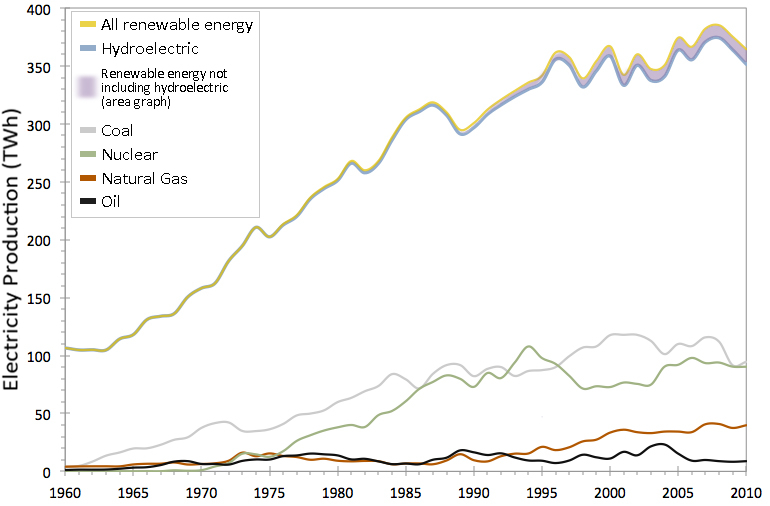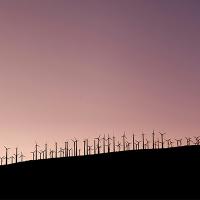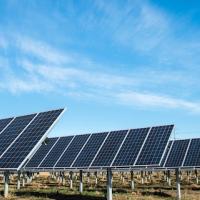January 30st, 2013
Earlier this month, the MC3 project brought together researchers, practitioners, government representatives and community leaders to engage in a peer-to-peer learning exchange for sharing climate innovations and strategies. A reoccurring theme in our discussion was energy, how to implement energy efficiency, how to implement community-wide clean energy systems and how to foster a culture that readily adopts sustainable energy technologies.
Canada is of the top three largest producers of hydroelectric energy (Earth Policy Institute, 2012), shown in the figure below. In the last half century, almost 40% of Canadian energy was produced through hydroelectricity. In the mid-1970s, Canada began exploring other renewable sources of electricity generation, which grew to over 1% of the country’s production in the early 2000s. Leading examples of innovation in renewables can be seen with the solar power project in T’Sou-ke and the District Energy Systems of Prince George and Revelstoke. As production from renewables has grown over the last decade, coal-based production has decreased from its maximum production in 2001 of 13% to less than 10% in recent years. As noted in the last CRC blog, Change is in the Wind, Ontario plans to phase out coal energy production by 2014.
CRC plans to continue this exploration of Canada’s energy pathway and the innovations that contribute to sustainable energy systems through the Solutions Agenda. Our next e-Dialogue (scheduled for March) focuses on the theme of energy, maybe getting energy right is the first critical step to sustainable community development?

Data sources – Data for figure above was retrieved from the World Bank Group.
Reference Cited
Earth Policy Institute (2012). Hydropower continues steady growth. Article written by Hayley Moller. Retrieved, January 29, 2013, from http://www.earth-policy.org/data_highlights/2012/highlights29
- Log in to post comments



CRC Comments